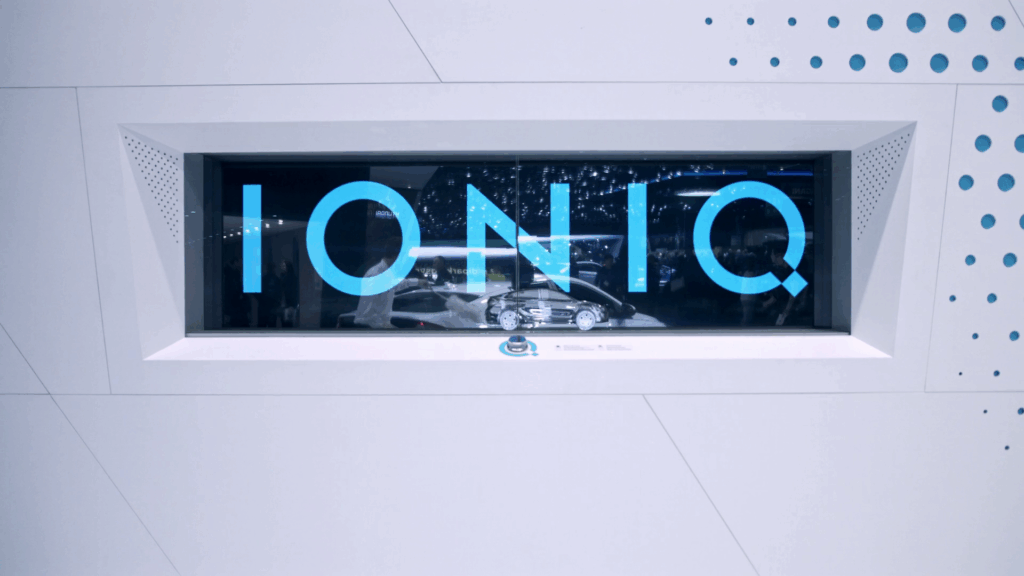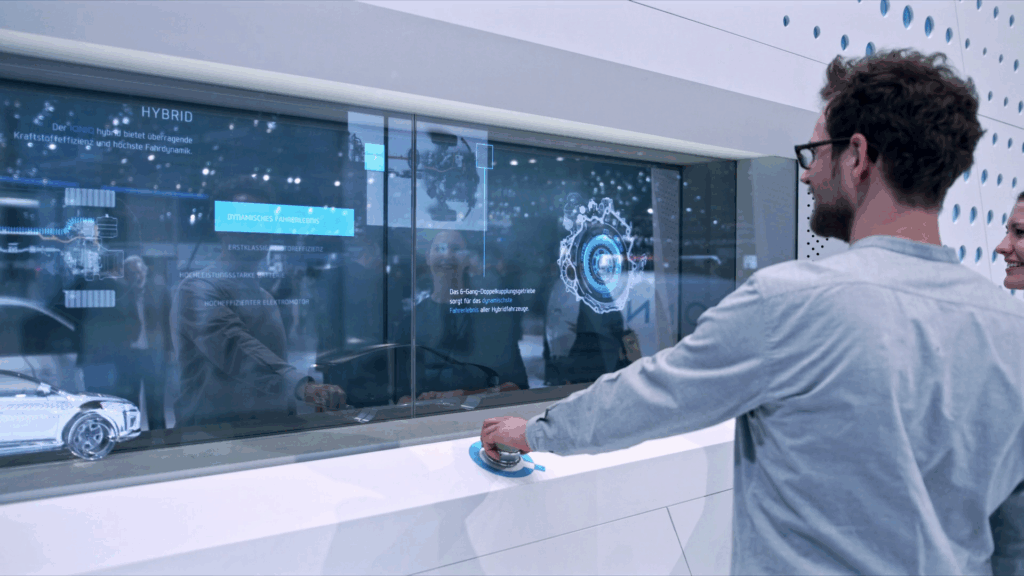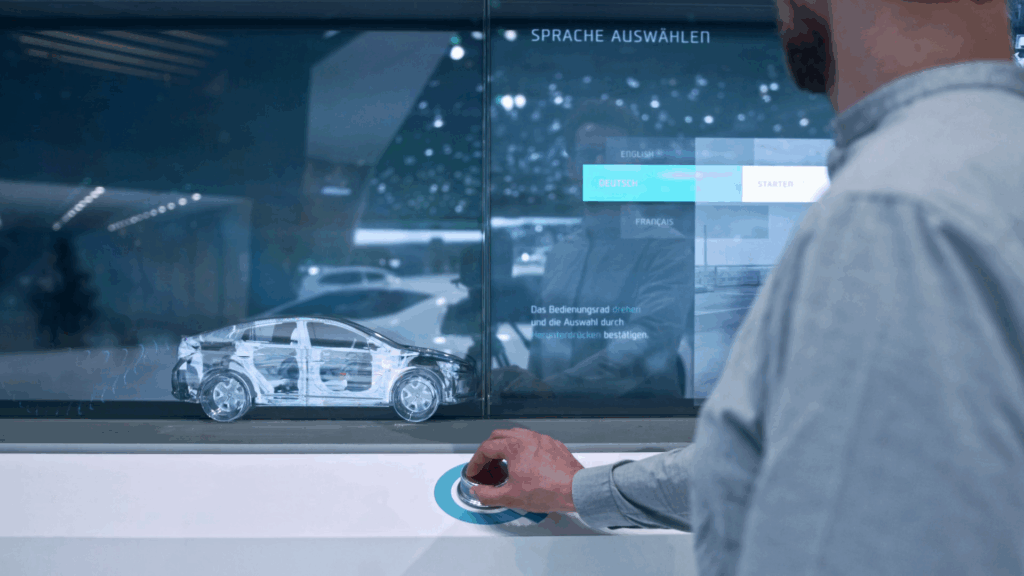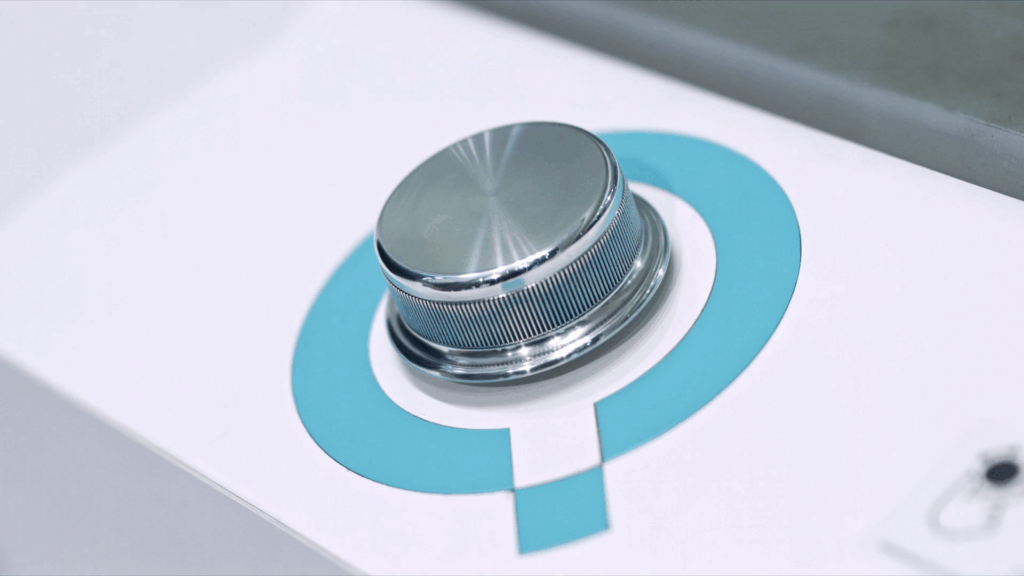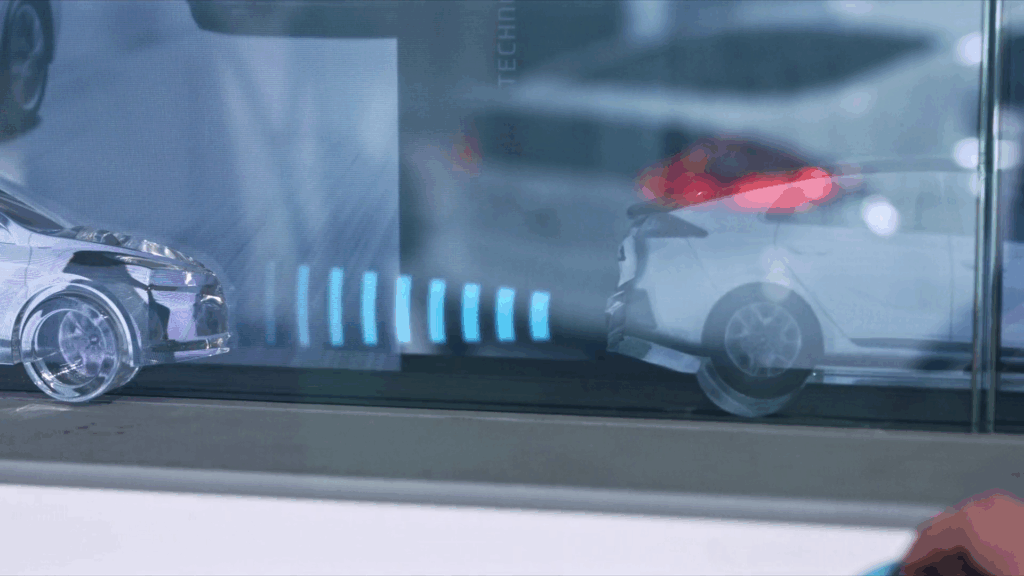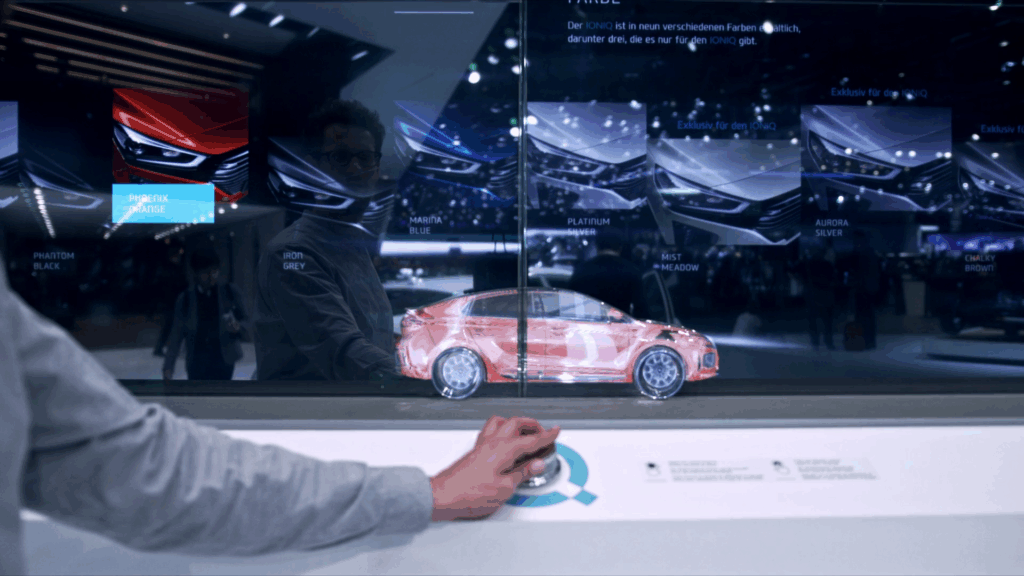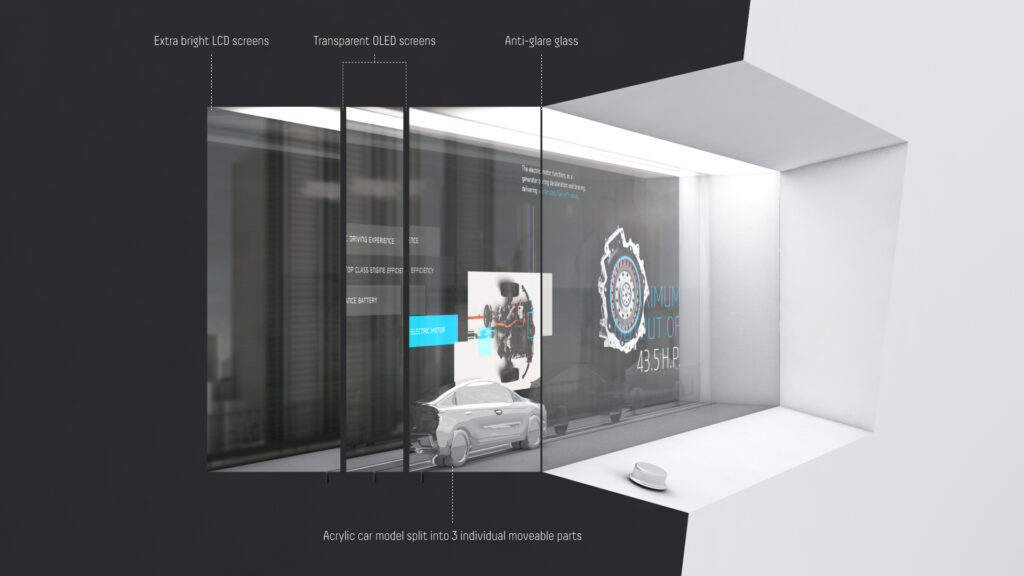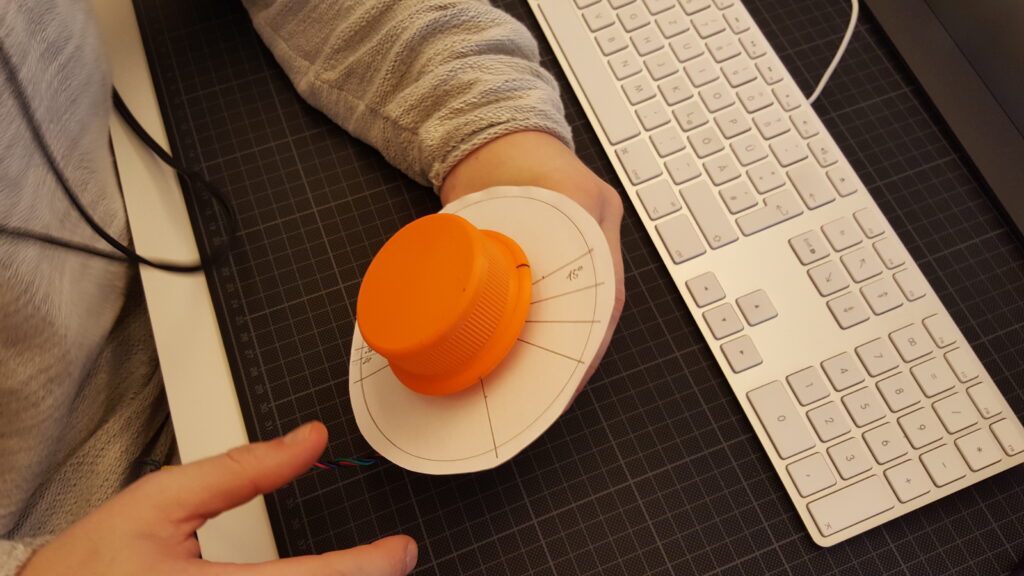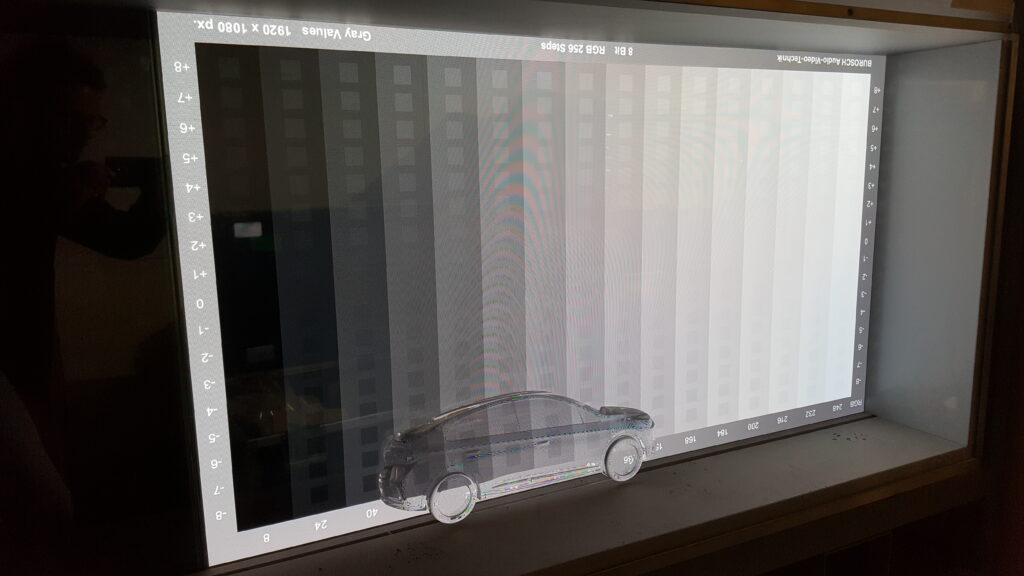IONIQ
This early transparent OLED installation for Hyundai IONIQ turns complex technology into a tangible and interactive experience.
| Year | 2016 |
| Client | Hyundai |
| Type | Interactive Installation |
| Role | Concept, Design, Developer |
| Tools | Rhino3D, vvvv |
| Team | Liganova Horizon |
Project Description
Developed to introduce the Hyundai IONIQ—the first passenger vehicle offering three alternative drive systems—this installation transforms invisible innovation into a tangible, futuristic experience. Designed as one of the very first exhibits to incorporate transparent OLED technology, the installation offered a groundbreaking visual journey into the future of automotive engineering.
Visitors were immersed in a multidimensional world through synchronized translucent OLED displays and three motorized acrylic IONIQ models. The acrylic components, split into three movable sections, were carefully choreographed between the display layers. When aligned, they formed a seamless vehicle model, enhancing the perception of depth and movement.
User interaction was facilitated by a custom-built rotary controller. This interface was iteratively refined through several 3D-printed prototypes until it achieved the ideal haptic quality. The final version was CNC-machined from aluminum, ensuring both precision and tactile satisfaction. The overall design of the exhibit followed the architectural language of the Hyundai trade show booth, blending seamlessly with its futuristic aesthetic.
By combining dynamic soundscapes, multilayered infographics, and a simple interface, the installation turned complex automotive technologies into an emotionally engaging and intuitively graspable experience.
Technical Description
At the core of the installation were four synchronized transparent OLED displays arranged in a layered spatial setup and two regular displays in the background. Behind and between these translucent screens moved three precisely machined acrylic IONIQ model sections on a motorized rail system, creating a composite visual that shifted in response to user input.
The interactive interface featured a rotary dial built for robust engagement. Multiple iterations of 3D-printed prototypes were tested for haptic performance before the final design was manufactured from aluminum. A custom control system ensured real-time synchronization between the user interaction, movement of the model components, and visual content on the OLEDs.
The system architecture allowed intuitive control of the layered experience while maintaining a clean visual and spatial integration with the booth design. The exhibit pushed the boundaries of trade fair installations by integrating one of the earliest uses of transparent OLEDs with responsive physical motion and layered visual storytelling.

